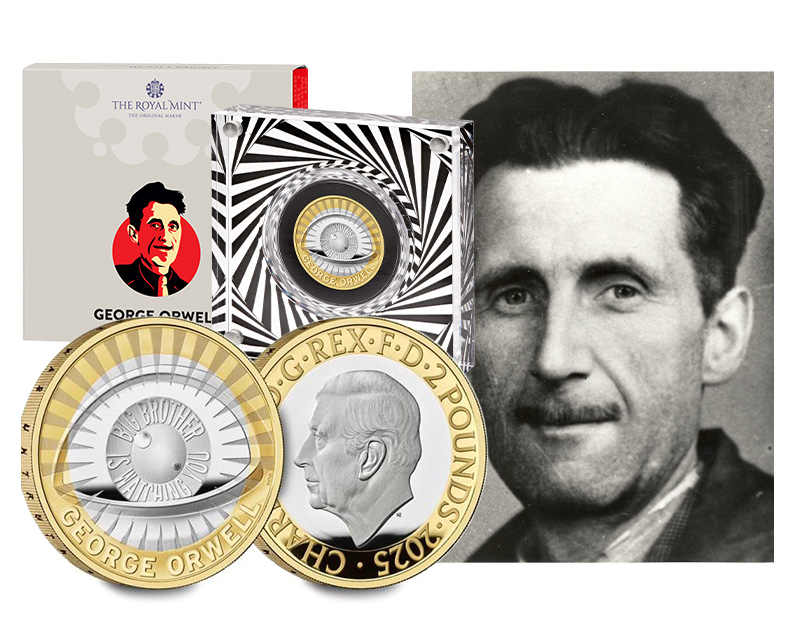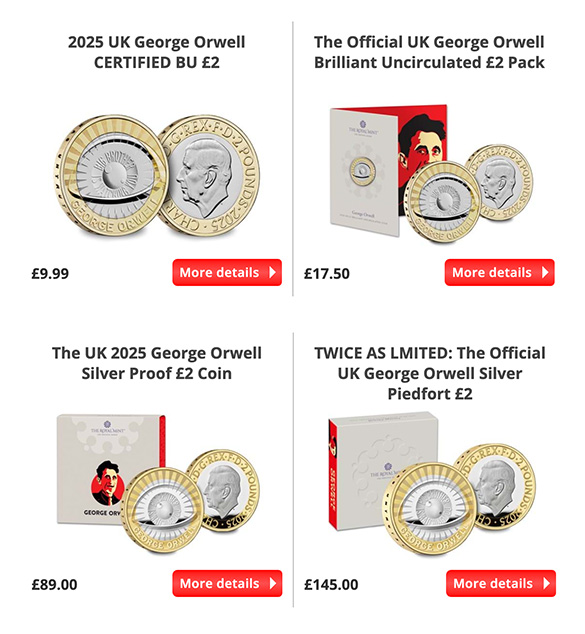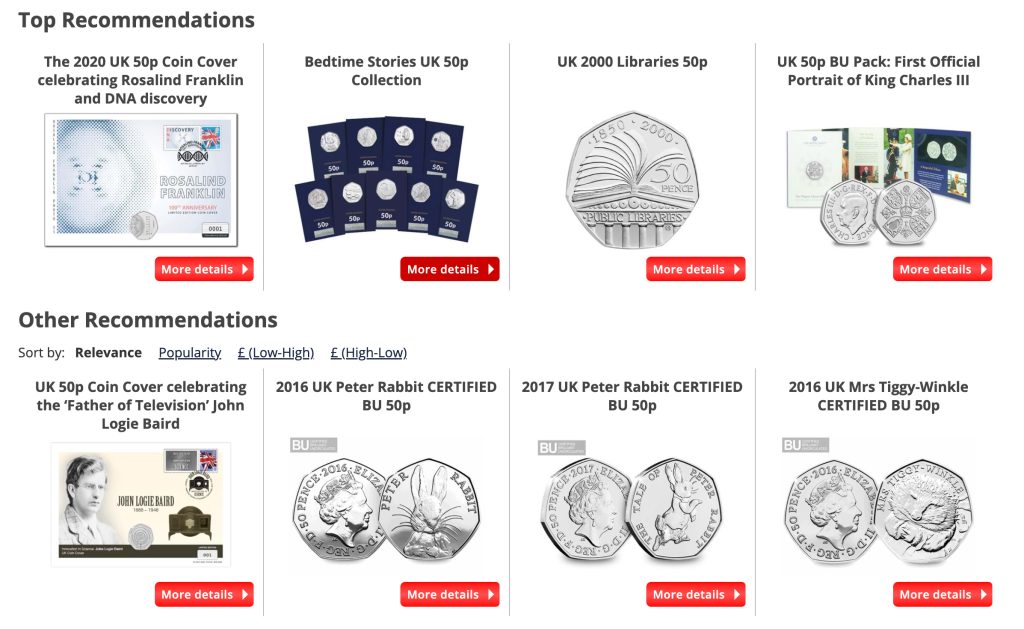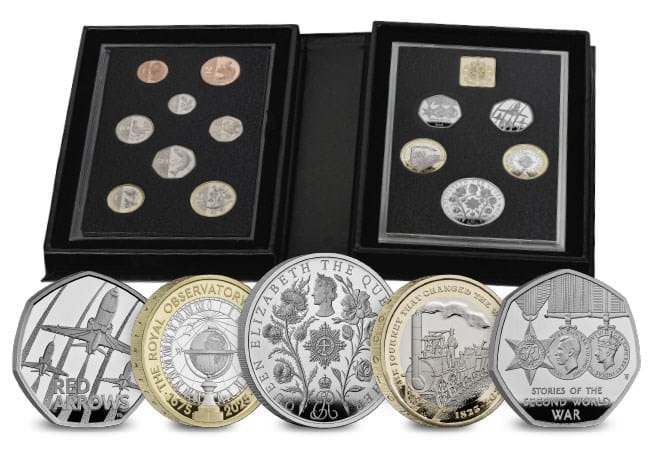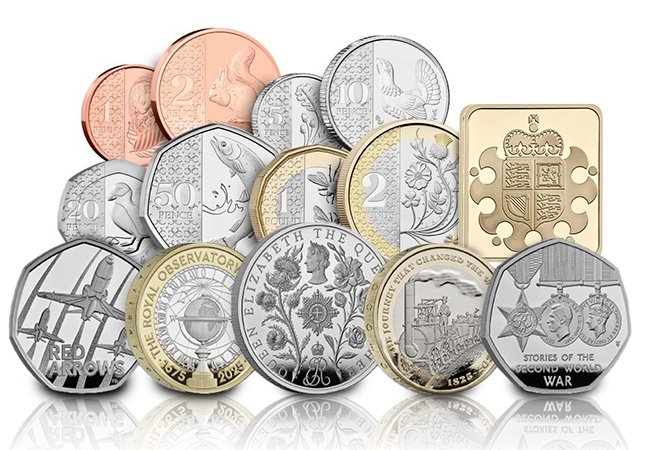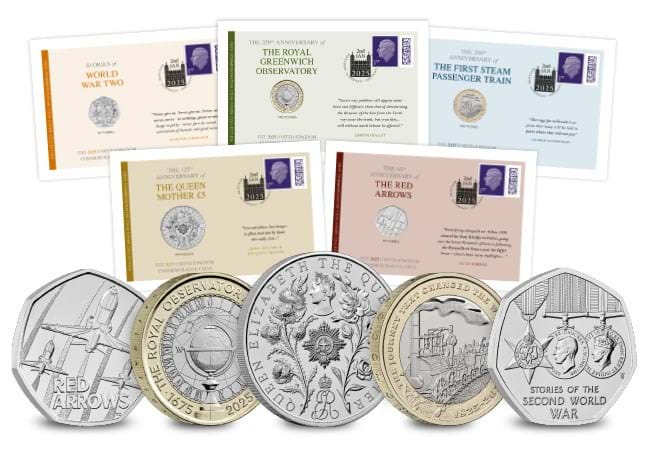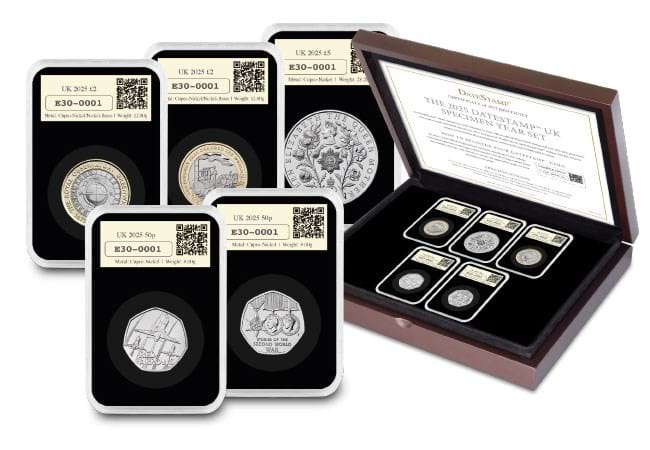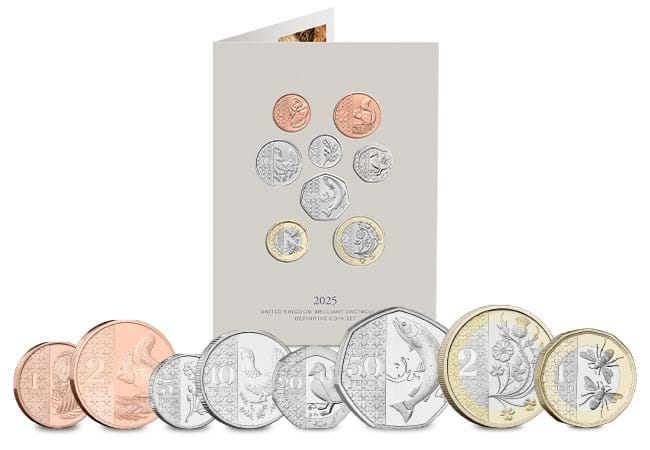Information
George Orwell: A Literary Icon Honored with a Special £2 Coin
Seventy-five years after the death of George Orwell, one of the most influential authors of the 20th century, and now a brand new £2 coin has been released to celebrate his life and legacy. Known for his groundbreaking works 1984 and Animal Farm, Orwell’s writing remains as relevant today as ever. This special coin is not only a tribute to his visionary thinking but also a unique addition to any collector’s portfolio.
This special coin has already generated significant interest in the media, with many praising its clever design and relevance in today’s world.
A Coin That Celebrates Orwell’s Masterpiece
The reverse, or tails, side of the coin is a nod to 1984, Orwell’s dystopian novel that continues to captivate readers decades after its publication. The novel tells the story of Winston Smith, a man living under totalitarian rule and constant surveillance. The coin’s design, by renowned artist Henry Gray, cleverly incorporates the themes of 1984.

At its centre, what appears to be an eye is actually a camera lens, symbolising the pervasive surveillance in Orwell’s fictional world. Surrounding the lens is the chilling phrase, “Big Brother is watching you.” Adding further depth, the coin’s edge inscription features another thought-provoking quote: “There was truth and there was untruth.”
A Tribute to Literary Greats
The George Orwell £2 coin is part of The Royal Mint’s proud tradition of honouring literary giants. Previous coins have celebrated figures like William Shakespeare, Jane Austen, and J.R.R. Tolkien. Rebecca Morgan, director of commemorative coin at The Royal Mint, shared her excitement about this release:
“The works of George Orwell have influenced generations, and his most famous works are still being studied today – decades on from their first publication. I am delighted to share this unique design with collectors and fans of Orwell’s work, paying tribute to one of the most world-renowned authors of the 20th century.”
Why This Coin Matters Today
In our modern world, where surveillance technology and debates over privacy dominate the news, Orwell’s warnings feel more relevant than ever. Terms like “Orwellian” and “Big Brother” have become part of our everyday language, highlighting the ongoing significance of his ideas.
This coin captures those themes perfectly, serving as both a tribute to Orwell and a reminder of the importance of protecting truth and freedom.
Collectible Editions
The George Orwell £2 coin is available in several editions to suit all collectors:
- Brilliant Uncirculated (£9.99+p&p): 2025 UK George Orwell CERTIFIED BU £2
- Brilliant Uncirculated (£17.50 +p&p): A perfect starting point for new collectors.
- Silver Proof (£89 +p&p): A high-quality finish that highlights the intricate details of Henry Gray’s design.
- Silver Piedfort (£145 +p&p):TWICE AS LMITED: The Official UK George Orwell Silver Piedfort £2
Secure Yours Today
Don’t miss your chance to own this extraordinary tribute to George Orwell. Celebrate his life, his work, and his enduring impact on society with this beautifully crafted £2 coin.
UK’s Rarest 50p Coins
If you’ve landed here, chances are you’re wondering if that 50p rattling around in your wallet could be one of the rarest 50p coins in the UK. And you might be right!
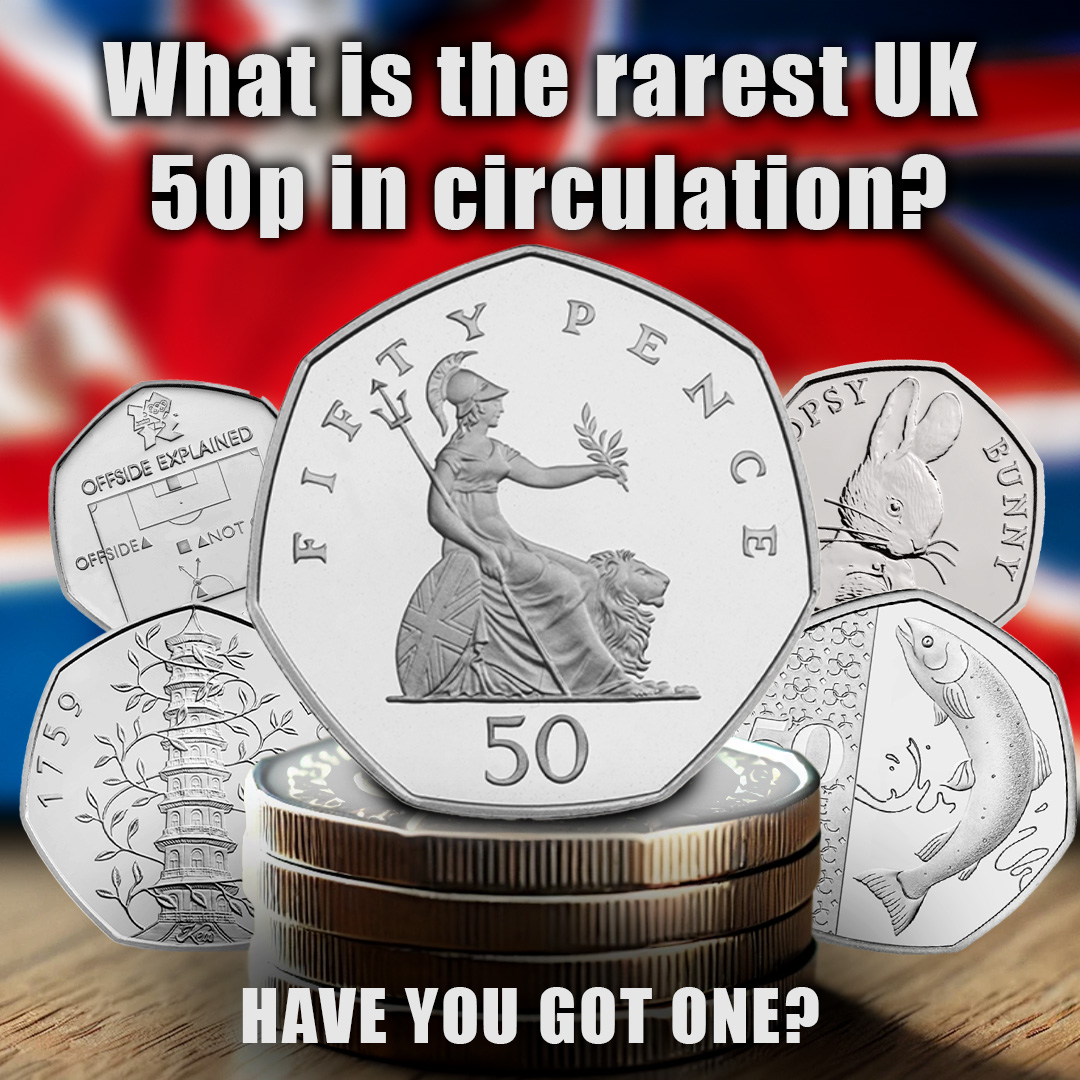
The 50p coin isn’t just a masterpiece of design—its unique heptagonal shape has been a canvas for celebrating Britain’s history, culture, and achievements since 1969. But among the countless coins in circulation, a few rare gems have captured the imagination of collectors everywhere.
Could your 50p be one of these sought-after treasures? From iconic designs to mintage mysteries, find out what makes certain 50p coins worth far more than their face value.
Let’s dive into the ten rarest 50p coins in UK circulation today, how many have been struck, and what makes them so special.
1. Atlantic Salmon 50p (2023)
Mintage: 200,000
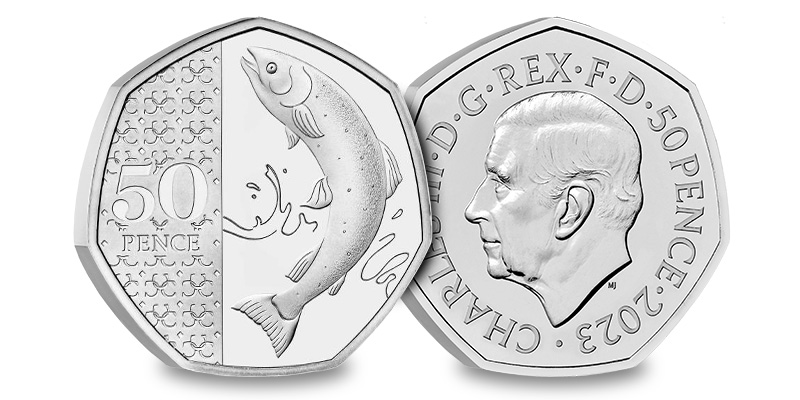
As one of the newest coins on this list, the Atlantic Salmon 50p holds the crown as the rarest 50p in circulation. Released in November 2023, it’s part of the first definitive coin set featuring King Charles III. Highlighting conservation efforts, this design celebrates the majestic Atlantic salmon, which faces threats like habitat loss and climate change. With its mintage lower than even the iconic Kew Gardens 50p, this coin has quickly become a collector’s dream.
You can own the 2023 Atlantic Salmon BU 50p as part of the 2023 Official BU Presentation Pack! Click buy now to secure your set.
2. Kew Gardens 50p (2009)
Mintage: 210,000
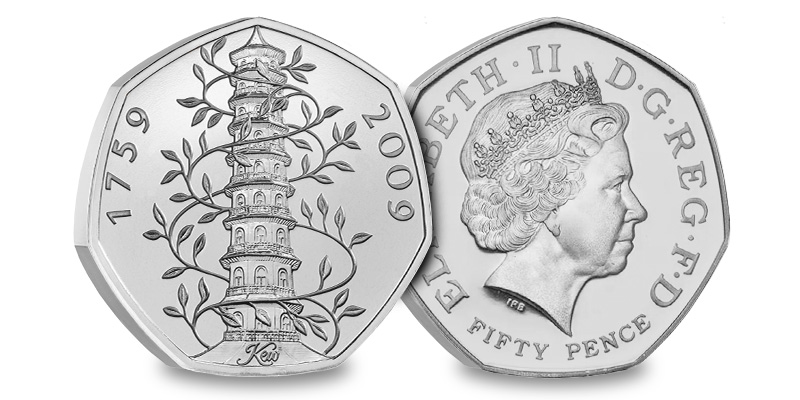
The legendary Kew Gardens 50p reigned as the rarest circulating coin for over a decade. Its intricate design by Christopher Le Brun features the iconic Chinese pagoda, encircled by climbing vines. This coin’s rarity stems from the low demand for 50p coins in 2009, leading to an exceptionally small mintage. Its value among collectors is unparalleled, with some selling for as much as £700 today. While a 2019 reissue exists, it’s the original 2009 edition that remains the most sought after.
3. Olympic Football 50p (2011)
Mintage: 1,125,500
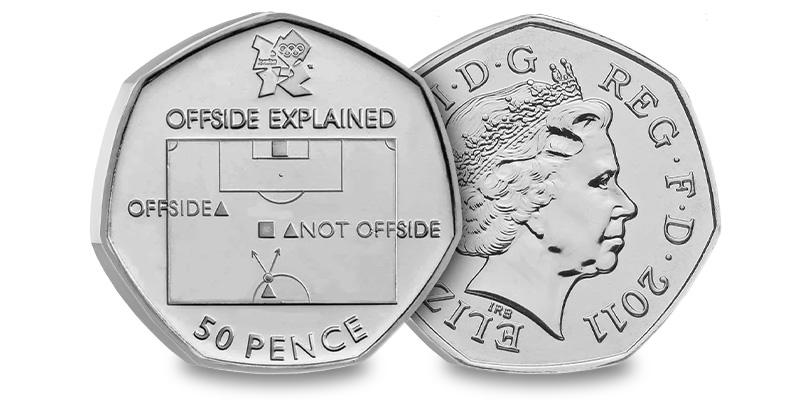
This coin from the London 2012 Olympics collection offers a playful twist on a classic sport. Designed by sports journalist Neil Wolfson, its reverse explains the notoriously tricky “offside rule” using a football tactics board. With only 1,125,500 minted, this coin is not only a collector’s item but a quirky keepsake for football fans.
4. Olympic Wrestling 50p (2011)
Mintage: 1,129,500

London 2012 Olympics collection – 2011 Olympic Wrestling 50p
Another standout from the Olympic 50p series, this coin celebrates the ancient sport of wrestling. Designed by Roderick Enriquez, the dynamic image captures a wrestler mid-throw against a futuristic stadium backdrop. Its low mintage and unique depiction of a historic sport make it a prized piece for collectors.
5. Olympic Judo 50p (2011)
Mintage: 1,161,500
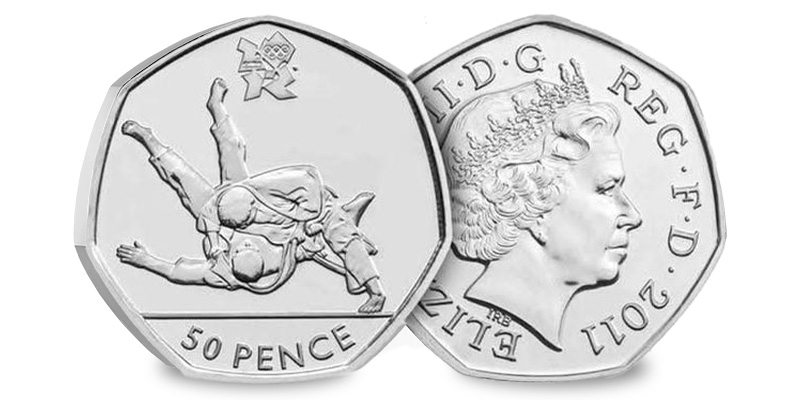
Judo, a sport of precision and power, takes centre stage on this Olympic coin. Designed by David Cornell, it depicts two athletes locked in a dramatic throw, with intricate details that showcase their flowing uniforms and dynamic movement. With its low mintage, this coin is as competitive to find as the sport it represents.
6. Olympic Triathlon 50p (2011)
Mintage: 1,163,500
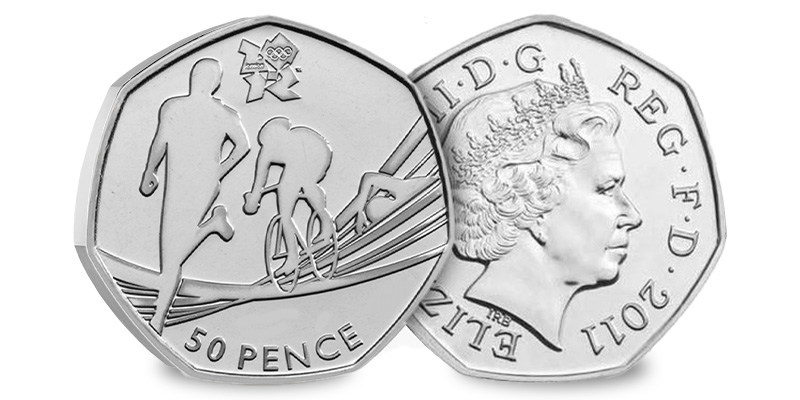
Designed by Sarah Harvey, this coin captures the endurance and determination of triathletes, with representations of swimming, cycling, and running seamlessly integrated into one striking design. The sweeping lines give a sense of motion, making this coin a fitting tribute to one of the toughest Olympic sports.
7. Peter Rabbit 50p (2018)
Mintage: 1,400,000
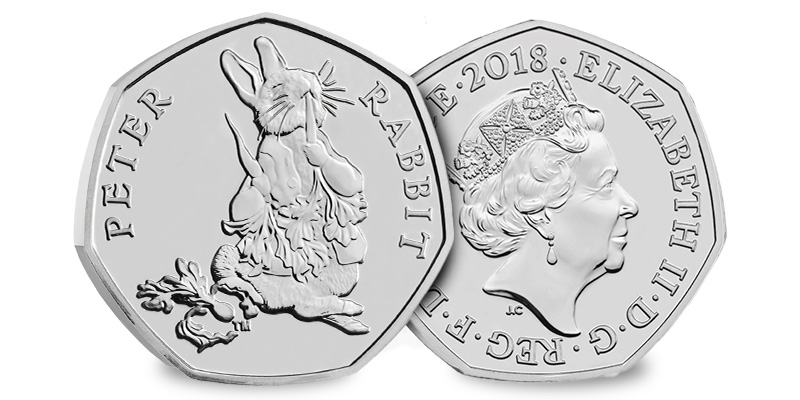
Beatrix Potter’s beloved character, Peter Rabbit, has charmed collectors and fans alike. Designed by Emma Noble, this coin shows Peter munching on radishes, bringing his mischievous personality to life. As one of the rarer coins in the Beatrix Potter collection, it’s a cherished addition to any collection.
8. Flopsy Bunny 50p (2018)
Mintage: 1,400,000
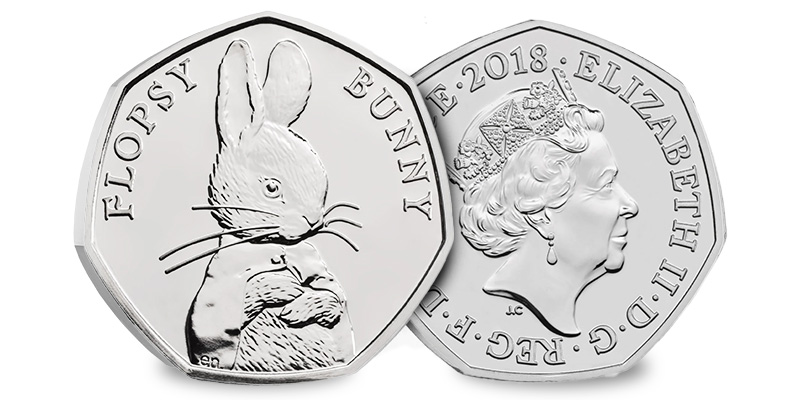
Flopsy Bunny, Peter Rabbit’s sister, made her debut on UK coinage in this delightful design by Emma Noble. Her distinctive cape and whimsical charm capture the essence of Beatrix Potter’s illustrations. With the same mintage as her brother, Flopsy Bunny is equally elusive in circulation.
9. Olympic Tennis 50p (2011)
Mintage: 1,454,000

This coin gained prominence after Andy Murray’s historic Olympic gold medal win in 2012. Designed by Tracey Baines, it features a simple yet elegant depiction of a tennis ball flying over a net, symbolising the grace and power of the sport. With its low mintage, it remains a treasured piece of Olympic memorabilia.
10. Olympic Goalball 50p (2011)
Mintage: 1,615,500
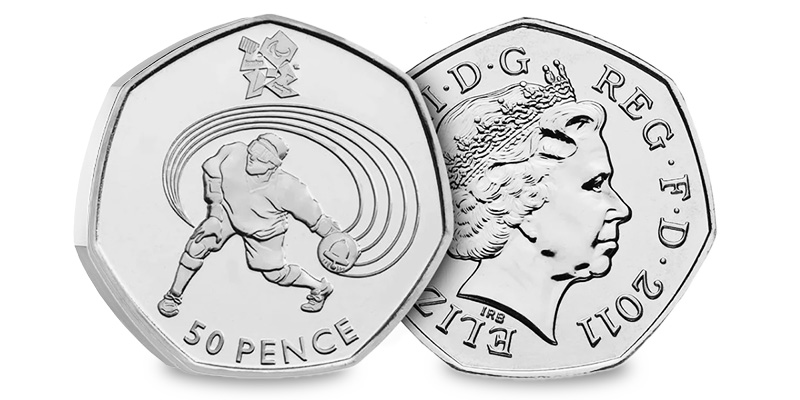
Designed by Jonathan Wren, this coin celebrates goalball, a Paralympic sport that combines skill and strategy. Its striking design shows an athlete mid-throw, highlighting the dynamism of the sport. Though its mintage is higher than others on this list, its rarity in circulation still makes it a valuable find.
The 2011 Olympic Goalball 50p is available to own by clicking here.
Have You Got Any of These Rare 50p Coins?
If so, that’s incredible! Owning one of these sought-after coins is a real achievement for any collector. But the journey doesn’t have to end there—why not take it further?
You can explore a wide range of 50p coins, including some of the rarest and most iconic designs, at westminstercollection.com. Whether you’re looking for uncirculated, silver, or gold specifications, we’ve got something for every collector.
Start your next collecting adventure today and see if you can add even more of these fascinating coins to your collection!
2025 UK Annual Coin Sets: Available Now!
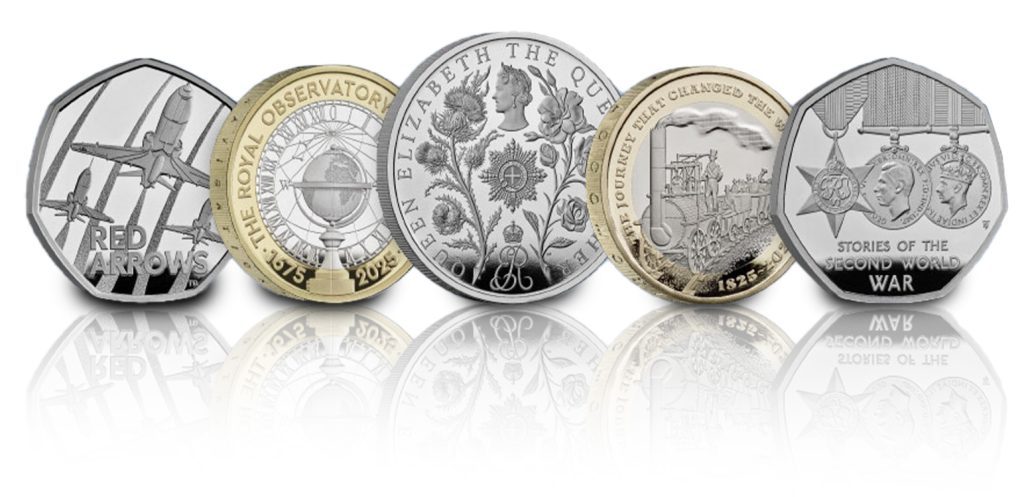
The start of a new year is always exciting, and what better way to celebrate 2025 than with the release of the brand-new UK Annual Coin Sets? Featuring stunning designs and commemorating key anniversaries, these sets are a must-have for collectors. With various options to suit every type of collector, let us be your guide to the best ways to own these important coins.
Official 2025 UK Annual Coin Set – Brilliant Uncirculated

This set brings together all the new 2025 definitive coins, from the £2 to the 1p, alongside five commemorative coins marking the years important anniversaries:
- The 350th anniversary of the Greenwich Observatory £2
- The 200th anniversary of the first Steam Passenger Train £2
- The 60th anniversary of the Red Arrows 50p
- 80 years since the end of World War II 50p
- The 125th birthday of the Queen Mother £5
Find out more information about each new commemorative coin by clicking here.
Each coin is struck to a Brilliant Uncirculated finish, free of blemishes and scratches. Presented in official Royal Mint packaging with detailed information about each coin, this set is available for just £75 (+p&p).
Official UK 2025 Proof Annual Coin Set

For those seeking the pinnacle of craftsmanship, the Proof Set is the ultimate choice. Limited to just 7,500 sets worldwide.
This set includes the same 13 coins as the Brilliant Uncirculated set, along with The Royal Mint’s Annual Medal—a special addition exclusive to this specification. Secure this exquisite set with an initial deposit of just £38 (+p&p).
The UK 2025 Annual Commemorative Coin Cover Collection

Celebrate 2025’s milestones with one of the most limited presentations of the UK’s 2025 commemorative coins. Each coin is featured within its own individual cover and postmarked on their release date—2nd January 2025. Limited to just 250 worldwide, this collection includes the five key commemorative coins of 2025:
- The 350th anniversary of the Greenwich Observatory £2
- The 200th anniversary of the first Steam Passenger Train £2
- The 60th anniversary of the Red Arrows 50p
- 80 years since the end of World War II 50p
- The 125th birthday of the Queen Mother £5
Find out more information about each new commemorative coin design by clicking here.
Each cover features a Royal Mail 1st Class stamp and is accompanied by a Certificate of Authenticity. Secure one from the tiny edition limit today with a deposit of just £25 (+p&p).
The UK 2025 DateStamp™ Specimen Year Set

This exclusive set is forever preserved in time, with each coin postmarked on the release date. Featuring only 1,495 sets worldwide, it includes:
- The 350th anniversary of the Greenwich Observatory £2
- The 200th anniversary of the first Steam Passenger Train £2
- The 60th anniversary of the Red Arrows 50p
- 80 years since the end of World War II 50p
- The 125th birthday of the Queen Mother £5
Find out more information about each new commemorative coin design by clicking here.
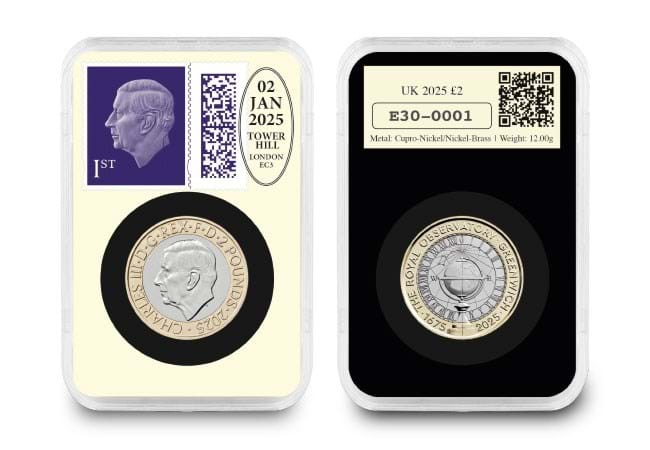
This collection of coins is forever set in time by the official Royal Mail postmark that signifies the coins’ first day of release – 2nd January 2025.
Act quickly to secure this iconic collection, starting at just £22 (+p&p).
The Official 2025 United Kingdom Brilliant Uncirculated Coinage Set

Celebrate the latest designs of King Charles III’s definitive coinage with this set, including the 1p to £2 coins in Brilliant Uncirculated quality. At just £39.50 (+p&p), it’s the perfect way to own these historic coins. By joining the Priority List, you can also secure future Definitive Coin Sets with ease.
Which Set is Right for You?
Whether you’re a seasoned collector or just beginning your journey, there’s a 2025 Annual Coin Set to suit your needs. From the stunning Proof Set to the accessible Brilliant Uncirculated presentation, each set offers a unique way to own a piece of 2025’s history. Act quickly to secure your choice before these limited editions sell out!
>>> View the entire range 2025 UK Annual Coin Sets by clicking here <<<



